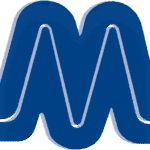Technical Sessions: Hands-On Demonstration and Practical Applications
- Start Date : 3 February, 2026
- Start Time : 8:00am
- End Date : 5 February, 2026
- End Time : 12:00pm
- Address : Hyatt Regency Hotel in Garden Grove, California
No Schedule
| # | Topic | Speaker | Time | Hall |
|---|---|---|---|---|
| 1 | 1B: Digital Multimeter Calibration | Jack Sommpi, John Bowman, Board Member, Technical Sessions | 8:45am - 10:00am | Salon V, N Tower |
| 2 | 3B: Practical Pressure Calibration, Hands-On | Kurt Stridinger, Scott Crone | 1:45pm - 3:00pm | Salon V, N Tower |
| 3 | 2C: Hand Pumps, Pressure Fittings and Hoses, Hands-On | Bill Ridler | 10:45am - 12:00pm | Salon VI, N Tower |
| 4 | 3C: Grounding Measurements | Mike Palmer | 1:45pm - 3:00pm | Salon VI, N Tower |
| 5 | 4A: AI & Metrology | Jeff Gust | 3:45pm - 5:00pm | Salon IV, N Tower |
| 6 | 4C: Holistic View of Measurement Quality and Decision Rules | James Salsbury | 3:45pm - 5:00pm | Salon VI, N Tower |
| # | Topic | Speaker | Time | Hall |
|---|---|---|---|---|
| 1 | 5A: How to Measure a Calibration Operation’s Overall Performance Pt 1 | Jesse Morse | 8:45am - 10:00am | Salon I, N Tower |
| 2 | 5C: Pipette Calibration | Larry Newman | 8:45am - 10:00am | Salon VIII, N Tower |
| 3 | 6A: How to Measure a Calibration Operation’s Overall Performance Part 2 | Jesse Morse | 10:45am - 12:00pm | Salon I, N Tower |
| 4 | 6B: Practical Temperature Calibration | Kurt Stridinger, Scott Crone | 10:45am - 12:00pm | Salon VII, N Tower |
1B: Digital Multimeter Calibration
- Jack Sommpi John Bowman, Board Member, Technical Sessions
- Salon V, N Tower
Course will cover basic Digital Multimeter (DMM) functions such as DC, AC and resistance. Attendees will have the opportunity to calibrate these functions on different DMM’s using a Multi-Function Calibrator. The error will be calculated and recorded on a test report per standard calibration practices
3B: Practical Pressure Calibration, Hands-On
- Kurt Stridinger Scott Crone
- Salon V, N Tower
Overview of pressure fundamentals including units of pressure, gauge, absolute and differential. analog gauges, pressure sensors, manometers and digital pressure gauges. Utilizing a hydraulic calibrator referenced to a digital pressure gauge, participants will actually calibrate an 800 PSI analog pressure gauge using current calibration laboratory procedures recorded on a test report.
2C: Hand Pumps, Pressure Fittings and Hoses, Hands-On
- Bill Ridler
- Salon VI, N Tower
Overview of operating hand pumps, pressure fittings and hoses. Attendees will have the opportunity to learn the correct methods of actually connecting to a pressure system
3C: Grounding Measurements
- Mike Palmer
- Salon VI, N Tower
Understanding the needs for proper grounding in measurement. How to measure earth grounding related to Calibration laboratories using multiple grounding test methods such as Fall of Potential.
5A: How to Measure a Calibration Operation’s Overall Performance Pt 1
- Jesse Morse
- Salon I, N Tower
This part of the seminar explores why it is important to know, based on collected management data, how a cal operation is performing to customer expectations and corporate expectations. Proposed methods of data collection will be demonstrated, along with the conversion of that data into management information and tools. Part 2 is Session 6A at 10:45 AM
5C: Pipette Calibration
- Larry Newman
- Salon VIII, N Tower
Overview of pipette calibration and its importance. ● Types of pipettes (e.g., air displacement, positive displacement) Common applications and significance of accurate pipetting ● Detailed explanation of gravimetric (including multichannel pipette calibration systems) and photometric calibration methods. ● Procedures for each method. ● Comparison of methods, including advantages and limitations. ● Identification of potential sources of error in pipette calibration (e.g., environmental factors, operator technique, equipment). ● Strategies to minimize these errors. ● Methods for estimating and reporting uncertainty in calibration results. Standards and Guidelines: Overview of relevant national and international standards (e.g., ISO/IEC 17025, ISO 8655). Best practices and recommendations for maintaining compliance. ● Maintenance and Quality Control ● Routine maintenance procedures for pipettes. ● Quality control measures to ensure ongoing accuracy and precision ● Proper use of ergonomics for pipette calibration technicians ● References: List of sources and further reading materials.
6A: How to Measure a Calibration Operation’s Overall Performance Part 2
- Jesse Morse
- Salon I, N Tower
Part 2 of the seminar will focus on establishing baselines for technician and administrative efficiencies. Methods of collecting data will be shown, and development of useful management tools will be described.
6B: Practical Temperature Calibration
- Kurt Stridinger Scott Crone
- Salon VII, N Tower
Review of temperature fundamentals including thermocouples, RTD’s, and thermistors. Participants will each calibrate a 25F to 125F pocket thermometer using programmable dry well temperature calibrators. Results are recorded on a test report as per standard calibration laboratory procedures








